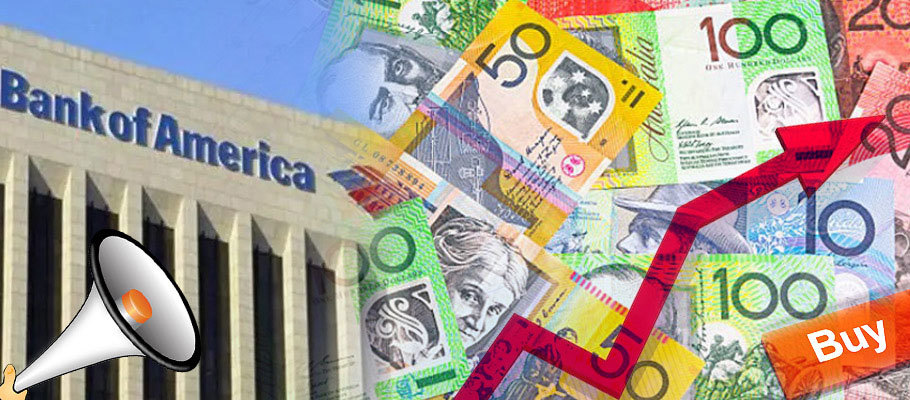
Published: March 29th, 2023
The much touted ‘China reopening’ rally looks to have had a smaller impact on the Australian Dollar than expected, but currency strategists at Bank of America still believe the Aussie could benefit from external factors.
A report from the Asia Forex Strategy unit at Bank of America Merrill Lynch in Hong Kong says the ‘upside risk to Chinese trade growth hasn’t been accurately priced.’ The assessment comes as the Australian fiat extends a losing streak against the Greenback, Euro, and Pound while the rebound analysts have been waiting for in the world's second-largest economy had so far underwhelmed.
China’s National Bureau of Statistics reported that the country’s industrial profits were down almost 23 per cent year-on-year for January and February 2023.
But BoA’s research also suggests China’s economy will gain momentum in the coming months, despite the soft start to the year.
It’s a fact that AUD has underperformed when compared to other assets that tend to sway with the ups and downs of China's economy. With the end of Beijing’s zero-covid policy, growth is now expected to accelerate.
BoA’s analysts say there have been indications that 'green shoots are starting to appear,’ particularly in China's property sector. Increasing international travel bookings from China also bode well for Australia's trade outlook.
The Australian Dollar has been running in the sand for much of the first quarter, falling back 4.59 per cent against the US Dollar in February and by 2.33 per cent against the pound. Against the Euro, the Aussie fell by 2.14 per cent in February, with a 3.10 per cent loss anticpated for March.
AUD's lower trend began at roughly point where the buzz around China’s ‘great reopening’ started to fade, BoA says.
In January, investors were betting on a rapid reopening in the world's second-largest economy and gains in the Australian Dollar and other China-focused assets. The return of big-spending Chinese tourists and international students was also tipped to give Dowen Under an additional growth filip.
The Aussie’s setback has sent GBP/AUD higher since early February, peaking on Monday 27th March at 1.8448 after a six-day run of uninterrupted gains. The Aussie to Greenback rate has been trending lower over the same period, touching a low of 0.6562 in late March.
In early February, AUD was holding firm as the best-performing G10 major for the year-to-date, despite gains by many of its peer currencies.
At the time, forex traders were looking for the Reserve Bank of Australia to post its ninth increase to the cash rate since April 2022, with an uptick to the benchmark of 25 basis points, or 3.35 per cent before another rate hike potentially arrives in March.
The consensus forecast said the central bank would raise the rate again next month, with some prospect of another 25-basis point rise, bringing the cash rate to 3.6 per cent in April, if it happens.
"The indicators we’ve seen in Australian domestic economic data over the past 30 days or so have been up and down. Labour figures for December 2022 disappointed as employment fell, surprising most analysts,’ said an analyst note from the Commonwealth Bank of Australia
‘A surprisingly strong print for fourth-quarter CPI inflation, paired with a plunge in December retail sales suggests the current cost-of-living crisis in Australia is deeply embedded.’
In late March 2022 the Aussie was up against the Euro, Dollar, and British Pound as forex traders reacted to signals that an interest rate by the Reserve Bank of Australia may be in the offing.
Minutes from the RBA's February policy meeting suggested interest rates could rise as quickly as April far earlier than the central bank had been signaling since the start of the year.
In fact, it was just in February 2022 that RBA Governor Phil Lowe told The South China Morning Post that the bank was ‘being patient’ on interest rates ‘in a way that markets with much higher rates of inflation simply can’t.’
After that, inflation Down Under started steadily rising and the RBA was clearly spooked. The bank’s February 2022 minutes said yearly core inflation in the first quarter of 2022 would likely exceed its top target of two to three per cent.
The minutes were published one week before the country's official inflation figures for Q1 were set to be released. ‘Inflation (had) accelerated, and another increase was expected,’ the RBA said, ‘with measures of underlying inflation in the first quarter anticipated to be north of three per cent.’
The minutes highlighted a robust domestic economy, strengthened by rising consumer spending thanks to the passing of the Omicron COVID wave, plus a tightening jobs market.
Rising house prices and an uptick in commodity exports were also highlighted, while members of the bank’s policy committee were in agreement that the RBA’s policy settings were ‘very accommodative’.
Despite that, the minutes emphasized that the central bank wanted to see upcoming data on both labour costs before and inflation before lifting interest rates, suggesting the most likely date as late April.
In a market commentary, forex analysts at Westpac noted the RBA’s monetary policy committee was ‘devoting more attention to global inflation risks while gauging the responses of other central banks’ in early 2022. The timetable for rate hikes had been accelerated around the world, Westpac said, and there was concern that markets might have been underestimating the coming inflation challenge.
AUD remained one of the best performing majors of 2022 and analysts expected it to remain buoyant, particularly after news that China was set to inject fresh stimulus into its economy.
Authorities in Beijing were responding to a sustained growth slowdown and announced in February 2022 that further support for Australia's biggest export market was on the way.